Quick search
CTRL+K
Quick search
CTRL+K

Strasbourg is France’s easternmost city. It is located on the Rhine and thus along the border with Germany, and throughout history the city has been under both German and French rule, which can be seen in both historical events and in many neighborhoods of the interesting city.
The island of Grande Île is the center of Strasbourg, and here are many sights and opportunities for lovely walks that can start at Place Kléber. On the island you can see the city’s cathedral and four other old churches as well as the atmospheric neighborhood, Petite France, with canals and half-timbered houses.
Strasbourg is one of the centers of European politics. There are a number of institutions in the city, the most famous of which are the European Parliament and the Council of Europe. You can see the buildings in the Quartier Européen area. Another exciting neighborhood is beautiful Neustadt, which was laid out in the city’s German time.
The area around Strasbourg offers many and very varied excursion options. The mountains of the Vosges and the Rhine Valley are good places to experience nature, and there are also a large number of beautiful cities in both France and Germany.
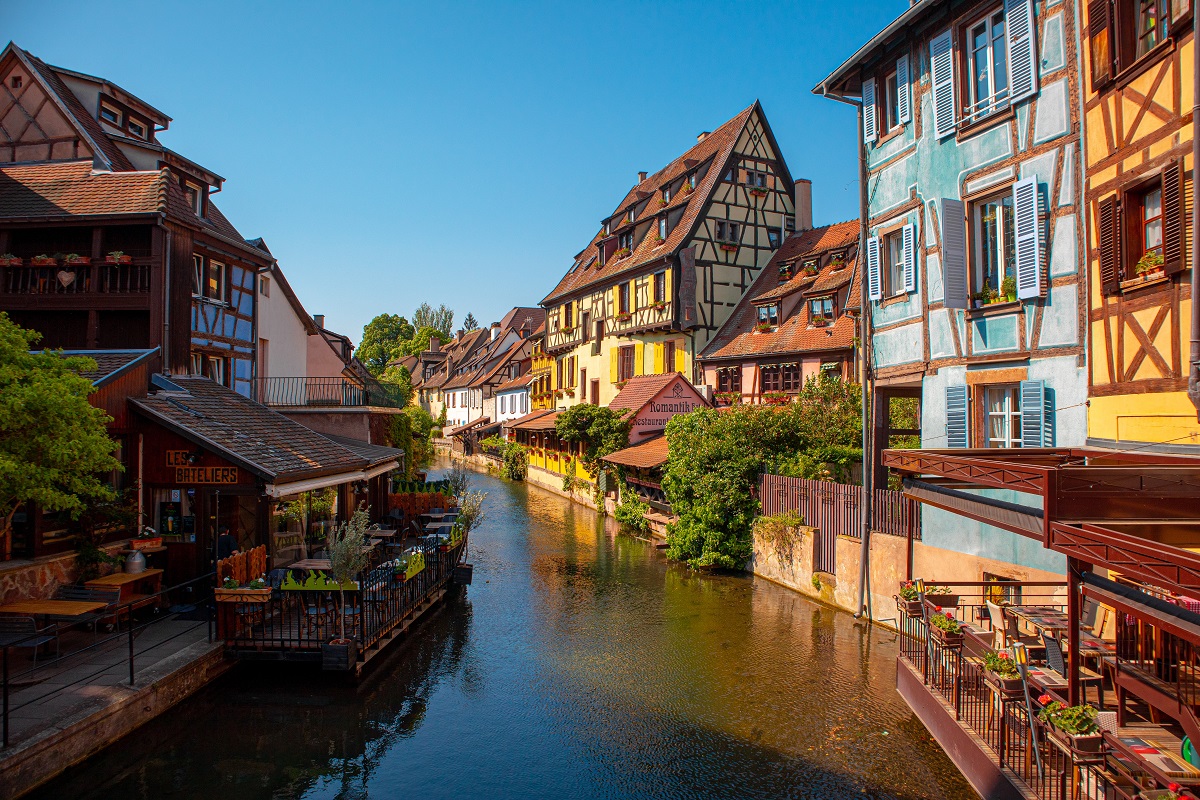
Petite France is a picturesque neighborhood with canals and half-timbered houses, located in the middle of the city of Strasbourg. You will find the neighborhood at the south-western end of the island of Grande Île, which is the island where Strasbourg’s old center and medieval city originated and grew. The entire island, and thereby also Petite France, is included in UNESCO’s list of world cultural heritage.
You can take some wonderful walks in Petite France, located between Quai de la Bruche, Rue du Bain-aux-Plantes, Place Benjamin-Zix and Rue des Dentelles to the north, Rue du Pont-Saint-Martin to the east and the Canal de la Zornmühle to the south. To the west, Petite France is completed by the successive bridges, the Ponts Couverts.
It is the river Ill that runs through Strasbourg, and at Petite France the river divides into a series of channels that almost cascade through the area, which was home to the city’s tanners, millers and fishermen in the Middle Ages. Executioners, prostitutes, etc. also lived in the area, and the characteristic half-timbered houses were built, as they were relatively cheap to build.
Petite France grew from the 13th century and only became a kind of unified area in the 20th century. Previously, the streets and parts of the district were separate entities, but where the current Rue du Bain-aux-Plantes formed a kind of main street. The many half-timbered houses were mainly built from the 16th century.
Petite France lay to the south-west of Strasbourg, and it was an area that was fortified several times over time. The Ponts Couverts were built as three covered bridges with four associated fortress towers, which can still be seen. To the west, the fortified dam, Barrage Vauban, was built at the end of the 17th century, and it can be seen from Ponts Couverts, among others.
Today you can walk around the entire area, which is one of the most visited in Strasbourg. Here you can see the many 16th-17th century houses, bridges, Ponts Couverts, Barrage Vauban and along the way enjoy the atmosphere and the view along the canals that run through Petite France.
Grande Île is the name of the island that forms the historic center of Strasbourg. The island lies between the main arm of the river Ill and a constructed side arm of the same river. Grande Île measures up to 1,250 meters long and up to 750 meters across. The island was inscribed as a UNESCO World Heritage Site in 1988, making Strasbourg the first city in the world to have its entire Old Town included on the prestigious list.
The medieval town, located on the entire Grande Île, spreads around the two central squares of the town centre; Place Kléber and Place de la Cathédrale. At the latter is Strasbourg’s famous cathedral, and in the old town you can also see the churches Église Saint-Thomas, Église Saint-Pierre-le-Vieux, Église Saint-Pierre-le-Jeune and Église Saint-Étienne.
There are also many other buildings worth seeing, and all in all, the entire Grande Île is worth seeing with its narrow streets and cozy urban spaces. Among other things, you can see the customs building Ancienne Douane from the 14th century, the 18th century residence Palais Rohan and the contemporary Hôtel de Hanau, which is today the city’s town hall. And this is also where you can visit the atmospheric Petite France area.
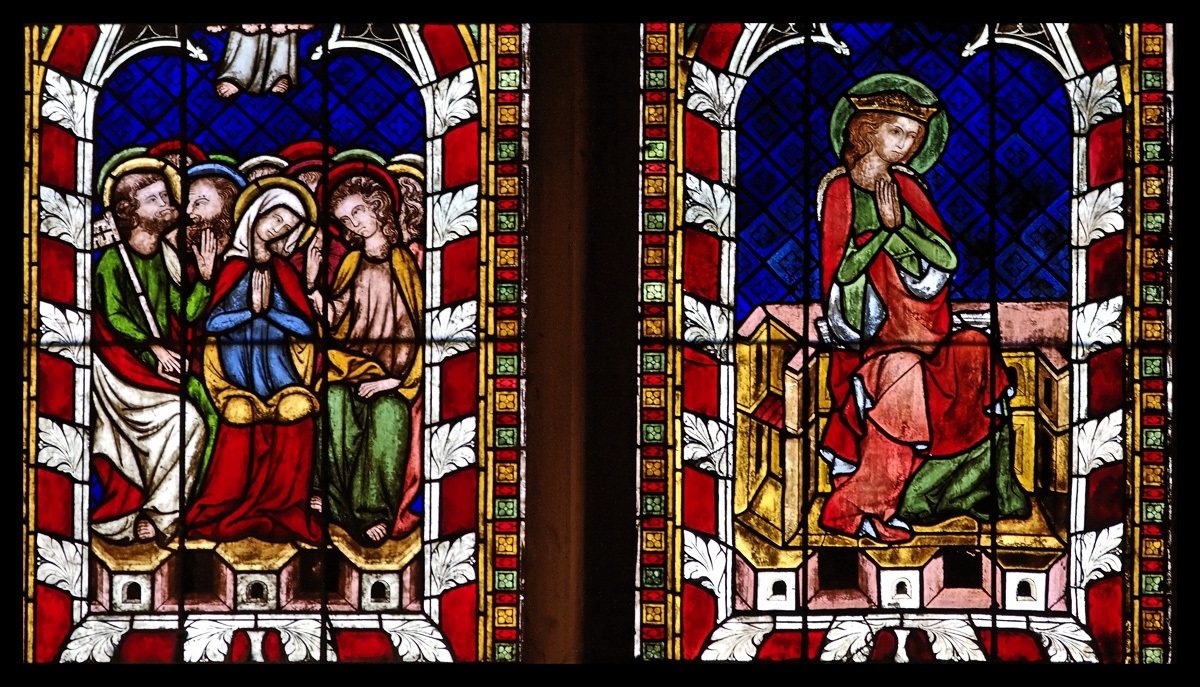
Cathédrale Notre-Dame is Strasbourg’s cathedral and is also one of the finest buildings of the late Gothic period. However, there are also Romanesque style elements in the church, which was built 1015-1439. It was Bishop Werner I of Habsburg who laid the foundation stone for the large building, which was continuously built over the following centuries.
The nave was completed in 1275, and the northern tower was completed in 1439 as the last part of the cathedral. There were intended to be two towers, but the southern tower was never built. In the wars of recent centuries, the cathedral has been damaged several times, but restored each time thereafter.
Cathédrale Notre-Dame is 110 meters long and 41 meters wide. The overall impression is of a soaring Gothic church, but in the church space you can also see where the Gothic meets the earlier Romanesque construction. The church is particularly known for its beautiful rose window from 1277 and for having been the world’s tallest building from 1647 to 1874 with its 142 meters in height.
Neustadt is the name of a district that was laid out as a kind of new center during Strasbourg’s German era, which as the capital of Elsaß-Lorraine lasted from 1871 to 1918. There are squares, boulevards and many interesting buildings in Neustadt, which for many were built in the period architecture from the so-called Gründerzeit under Emperor Wilhelm II.
It was the German chancellor Otto von Bismarck who in 1870 ordered the reconstruction of Strasbourg. Reconstruction began after the end of the Franco-Prussian War of 1870-1871, and in the following decades the city more than doubled in size. The city architect Jean Geoffroy Conrath was given the task of the city plan for Neustadt.
Conrath’s design for the district included a monumental avenue which merged the center of power at the Imperial Palace, inaugurated as Kaiserplatz in 1889, with the center of knowledge in the form of the city’s university. Along the avenue were other important buildings for the German administration of Strasbourg.
The plan for the construction of Neustadt was, among other things, inspired by Haussmann’s boulevards and squares in Paris. Several parks were also established as part of Neustadt, where the architecture forms a certain uniformity despite eclecticism’s use of many different styles. Neustadt is today included in UNESCO’s list of world cultural heritage, together with Strasbourg’s old town.

Place de la République is a grand square that was laid out as Kaiserplatz during Strasbourg’s German era. It forms the center of the district of Neustadt and is surrounded exclusively by large and monumental public buildings, with the former Imperial Palace as the most prestigious.
The square was laid out by Johann Carl Ott and named after German Emperor Wilhelm I. In 1911, an equestrian statue of the emperor was erected in the center of the square. This was taken down when Strasbourg became French, and today you can see a war memorial of Mother Alsace with a fallen French and a fallen German son.
The former Imperial Palace is among the buildings around the square. Today it is called the Palais du Rhin and is the seat of the shipping commission for the Rhine. You can also see Ludwig Levy’s old ministerial buildings for Elsaß-Lorraine, the university and national library, and the old parliament building of Elsaß-Lorraine, which today serves as the Théâtre National du Rhin.
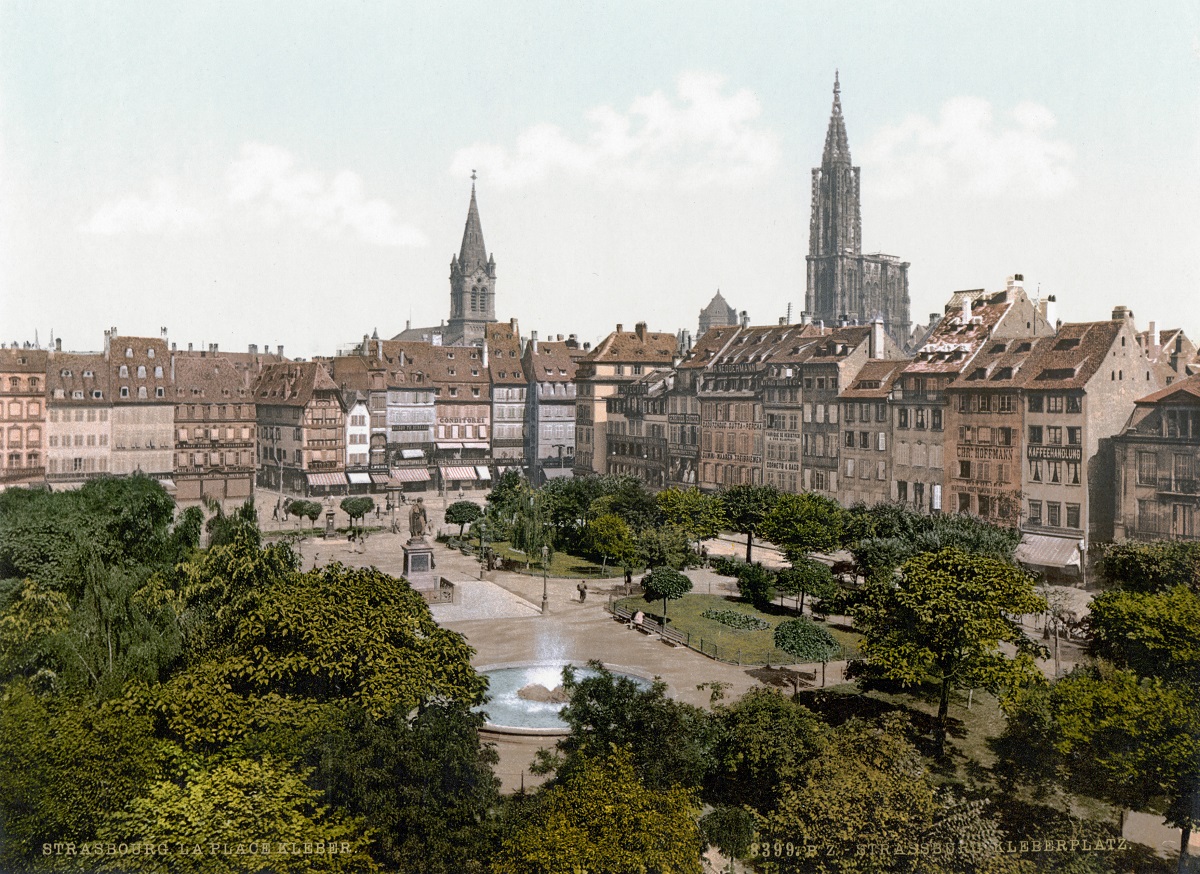
Place Kléber is Strasbourg’s largest square and the center of the city. The square is named after the French general Jean-Baptiste Kléber, who was born in Strasbourg in 1753. On the square you can also see a statue of Kléber, who is actually buried under the monument. The statue was erected in 1838 and was designed by Philippe Grass.
The square was previously called Barfüsserplatz after a Franciscan monastery that was located here, and Waffenplatz before it got its current name in 1840. The most famous and distinctive building around Place Kléber is the Aubette, built 1765-1772 by King Louis XV’s architect Jacques François Blonde. Aubette is located along the north side of the square.
Aubette was erected as the seat of a garrison, which the previous building on the site had also been. A fire in 1870 destroyed Aubette, except for Blondel’s facade, and it was until the 1920s that Theo van Doesburg, Sophie Taeuber-Arp and Jean Arp recreated the interior in the modern style of the day. Van Doesburg was a pioneer within the De Stijl movement, and he created, among other things, the dance hall in Aubette.
Quartier Européen or the European Quarter is an area of Strasbourg that is a city with several European institutions. The Council of Europe has its seat in the Palais de l’Europe building, while the European Parliament meets in the Batiment Louise Weiss building.
Inaugurated in 1999, the Parliament building was given an exterior of glass and metal and constructed in an elliptical shape. The building is located along the banks of the river Ill, and its distinctive architecture is visible from several perspectives in the city. On a visit you can learn more about the role and function of the European Parliament.
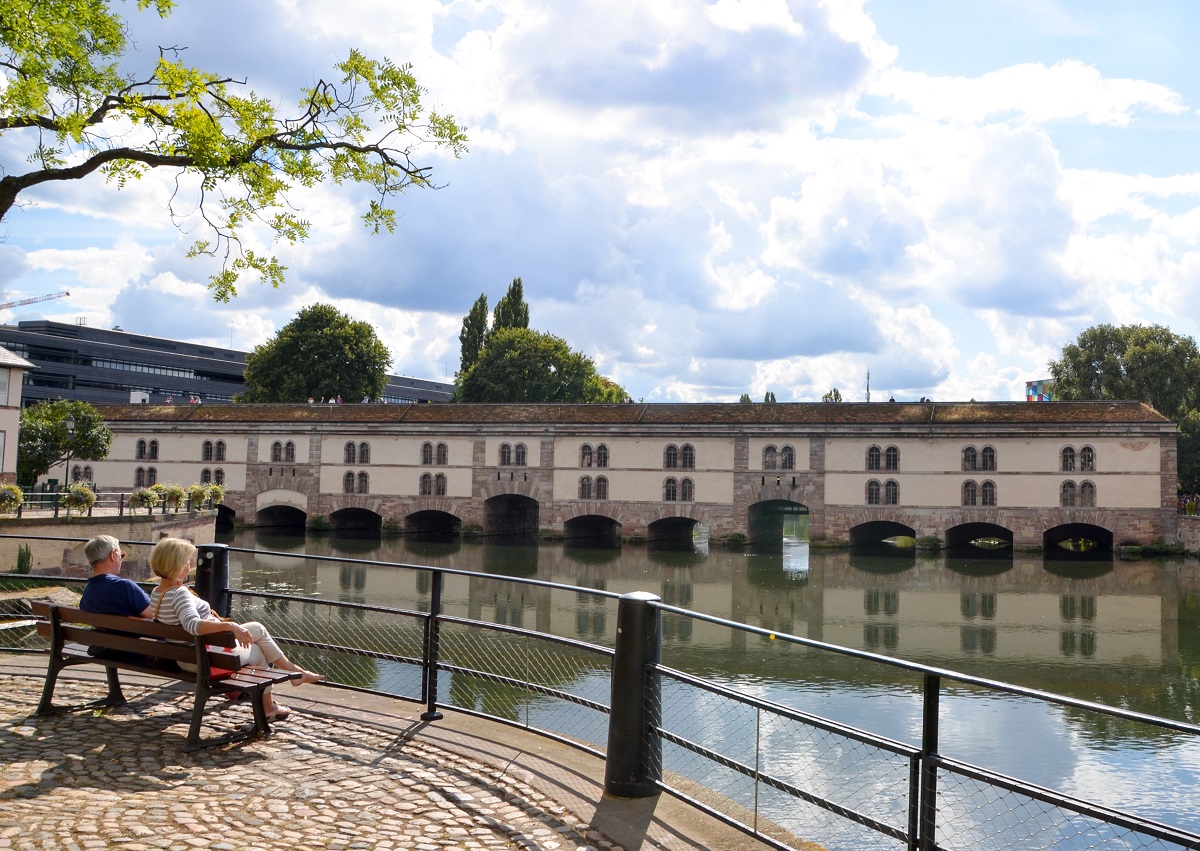
Barrage Vauban is a combined bridge, embankment and fortification that was built in the years 1686-1690 across the River Ill immediately west of central Strasbourg. The facility was built by the engineer Jacques Tarade according to the plans of the military engineer Vauban.
There is an inner corridor in the dam that could be manned and used to flood the land south of the city if enemies came. This feature was used in 1870 during the Franco-Prussian War. The dam is 120 meters wide, and there is a nice view from here to, among other things, Petit France.
The Musée d’Art Moderne et Contemporain is a museum of modern and contemporary art, where you can see a large collection of art from 1870 to the present day. Here are paintings, sculptures, graphics and much more by, among others, Max Ernst and Vasilij Kandinsky.
The museum is one of the largest of its kind in France. It is housed in an architecturally interesting building which was built on the river Ill from 1995-1998. It was the Parisian architect Adrien Fainsilber who designed the building.
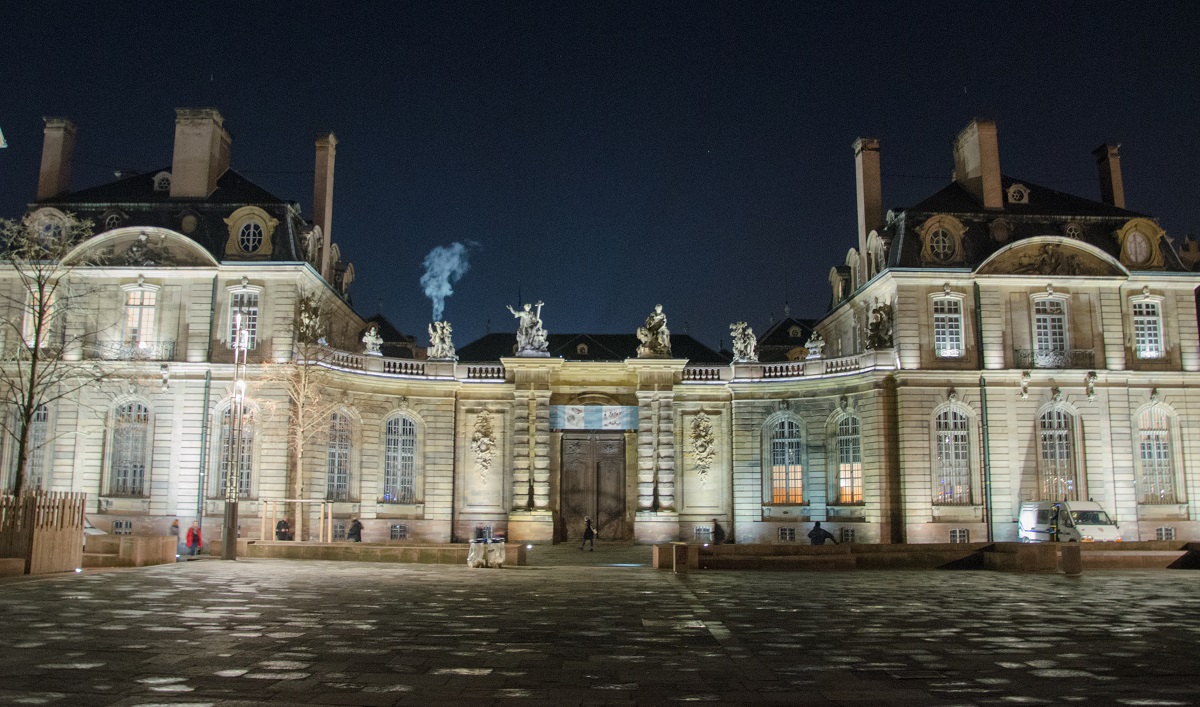
Palais Rohan is a beautiful mansion that was built as a residence for bishops and cardinals of the House of Rohan, an important noble family with roots in Brittany. The mansion was built next to Strasbourg Cathedral from the 1730s and was completed in 1742.
The Palais Rohan was designed by Robert de Cotte and is considered a masterpiece of French Baroque architecture. After completion, the mansion has hosted several French monarchs such as Louis XV, Marie Antoinette, Napoleon and Joséphine and Charles X.
Over the years, the Palais Rohan has been owned by the nobility, the state, the monarch and the city of Strasbourg. Since the end of the 19th century, it has been the seat of several museums; Archaeological Museum/Musée archéologique, the Museum of Decorative Arts/Musée des arts decoratifs and the Museum of Fine Arts/Musée des beaux-arts.
On a visit, you can experience the museum’s collections and of course also the interior of the mansion with many impressive rooms and halls. Among other things, you can see the synod hall, the monarchs’ chambers, beautiful ceramics and fine vases, tapestries and much more.
Hôtel de Hanau is a mansion in Strasbourg, also known as the Hôtel de Ville, which means that it is designed as the city’s town hall. The grand mansion stands on land originally owned by the family who were regents in a region of Hanau-Lichtenberg in the Teutonic Roman Empire.
The current mansion was built by Johann Reinhard III, who was the last Count of Hanau-Lichtenberg. The architect Joseph Massol was responsible for the construction, which took place 1731-1736. The mansion came into state ownership in 1790, and it has been Strasbourg’s town hall since 1805, when Napoleon gave the mansion to the city.
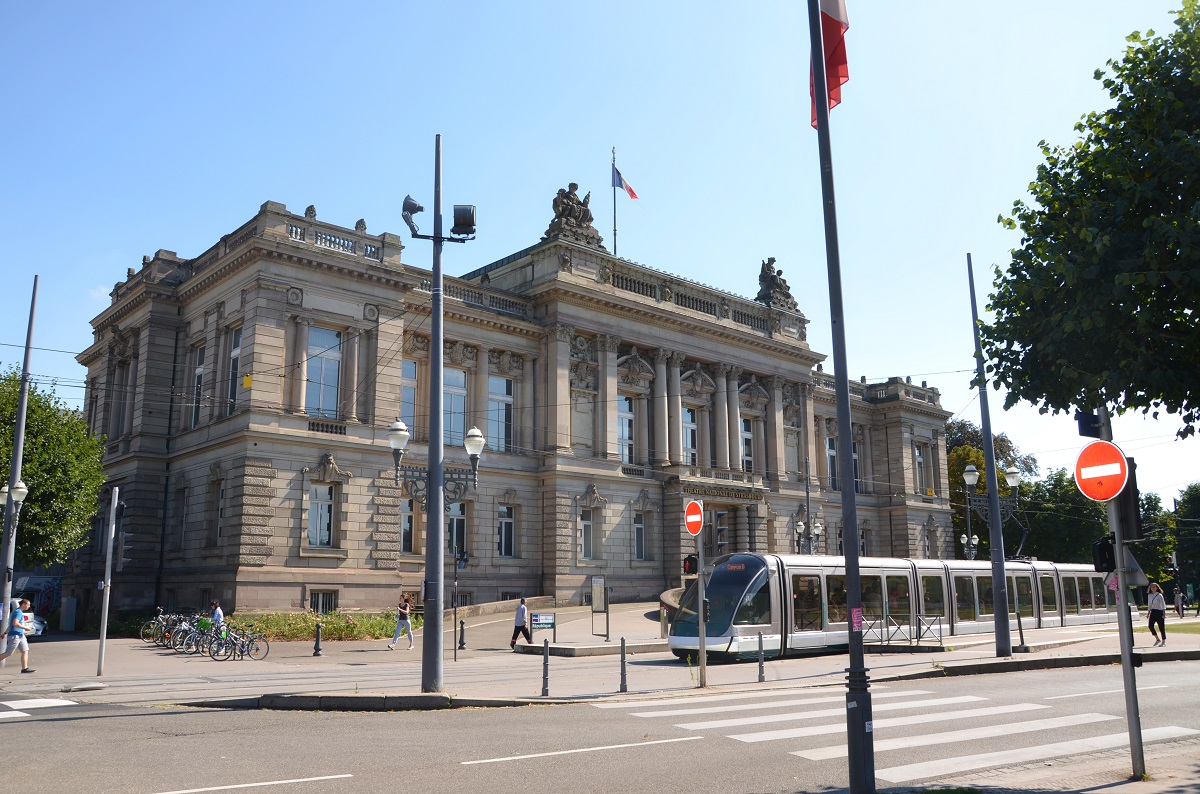
The Théâtre National is Strasbourg’s fine national theater, located in the Neustadt district, which was newly built during the German Gründerzeit period. The theater building was built in the Neo-Renaissance period in 1888-1889, and at that time it was the seat of the German parliament in the Reichsland Elsaß-Lothringen.
When the area became French in 1919, the French government offered the building to the city government of Strasbourg. The old parliament was then converted into a music conservatory. After an American bombardment in 1944, the parliament’s old meeting hall was destroyed, and between 1950 and 1957 a theater stage was built on the site instead.
The Bibliothèque Nationale et Universitaire is a library that was founded in 1872 as the German regional library for the Reichsland Elsaß-Lothringen. According to German tradition, all regions in Germany had to have a library, including Elsaß-Lothringen.
The institution was also an academic library and significant collections were established over the years. When the region became French in 1919, the French government considered whether the library should be closed or continued. The result was that they kept the library, which today has one of the most extensive collections in France.
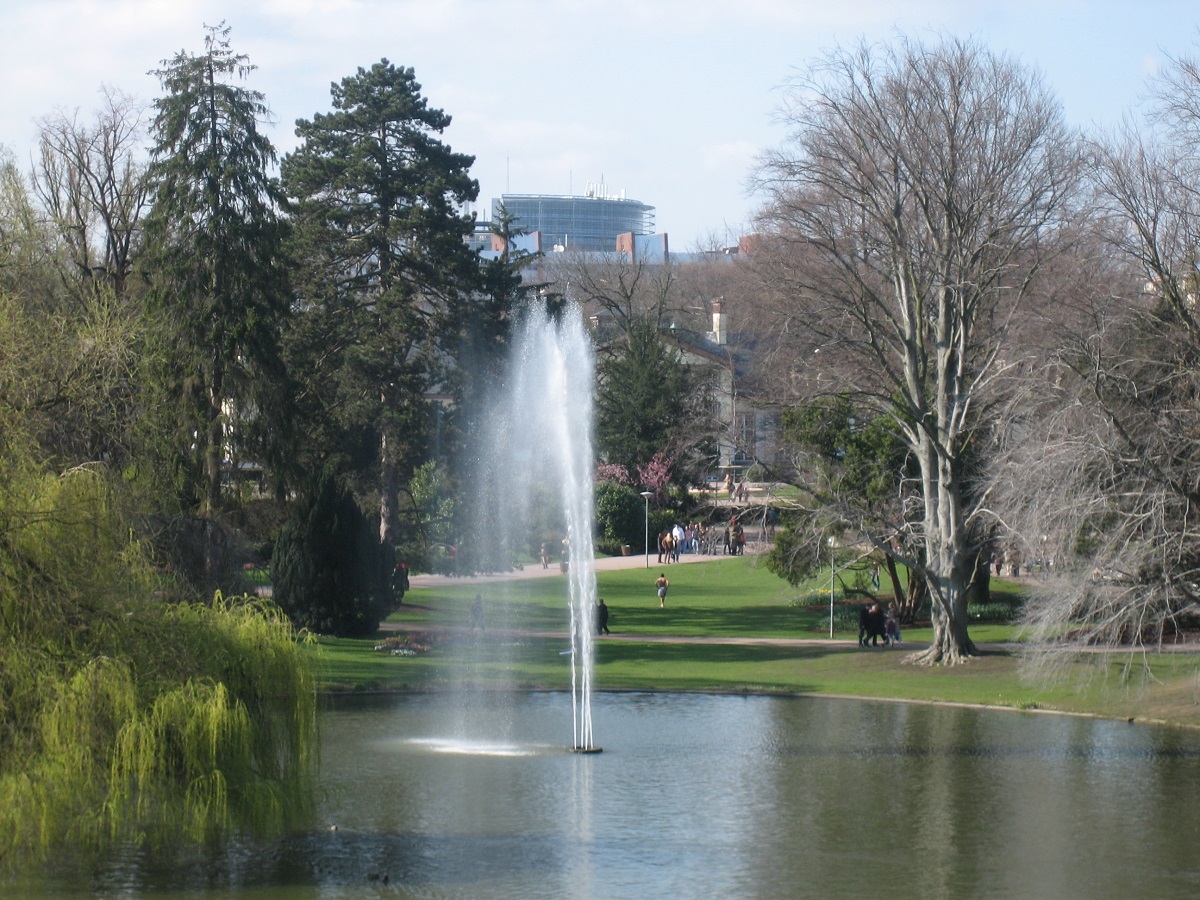
Parc de l’Orangerie is a park that is one of Strasbourg’s lovely green areas. The 26-hectare park was laid out in the 18th century and was planted, among other things, with orange trees. Today, the park offers fine facilities and many paths for strolls.
Parc de l’Orangerie was significantly expanded from the original park in the German era after 1871, and this happened not least in connection with an industrial and craft exhibition in 1895. For this, the park’s artificial lake and waterfall were created.
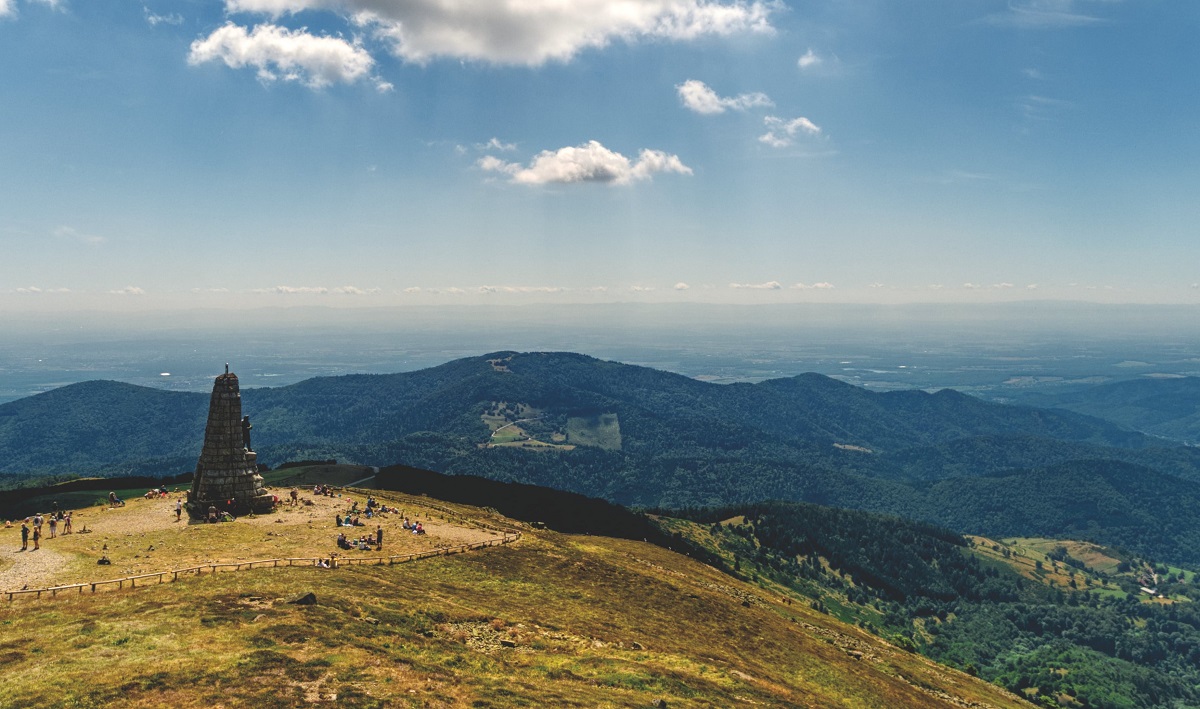
The Vosges or Vosges is a mountain range in Alsace and Lorraine, whose highest peak is the Grand Ballon at 1,424 meters. The mountain range, together with the northern Palatinate Forest, forms an area of approximately 8,000 km2 with mountains and beautiful nature. The two mountain and forest areas have been designated as a UNESCO biosphere reserve.
There are countless opportunities for lovely walks in mountains, forests and by lakes in the Vosges. With the relatively modest height of the highest mountains, one can also walk to many mountain peaks including the Grand Ballon. You can also visit villages and see exciting castles in several places, such as Château du Haut-Kœnigsbourg, from which there is a magnificent view.
Konzentrationslager Natzweiler-Struthof is the name of a former German concentration camp that was established as the only German camp on French territory during World War II. The camp was established close to the villages of Natzweiler and Struthof and was in operation from May 1941 to September 1944.
The establishment of the concentration camp was made possible by the German occupation of France, and it was mainly resistance fighters from the occupied territories who were put into the camp. It is believed that over 50,000 were interned in the camp during the war years, and many thousands of them died here. Today the camp is open as a museum and memorial.
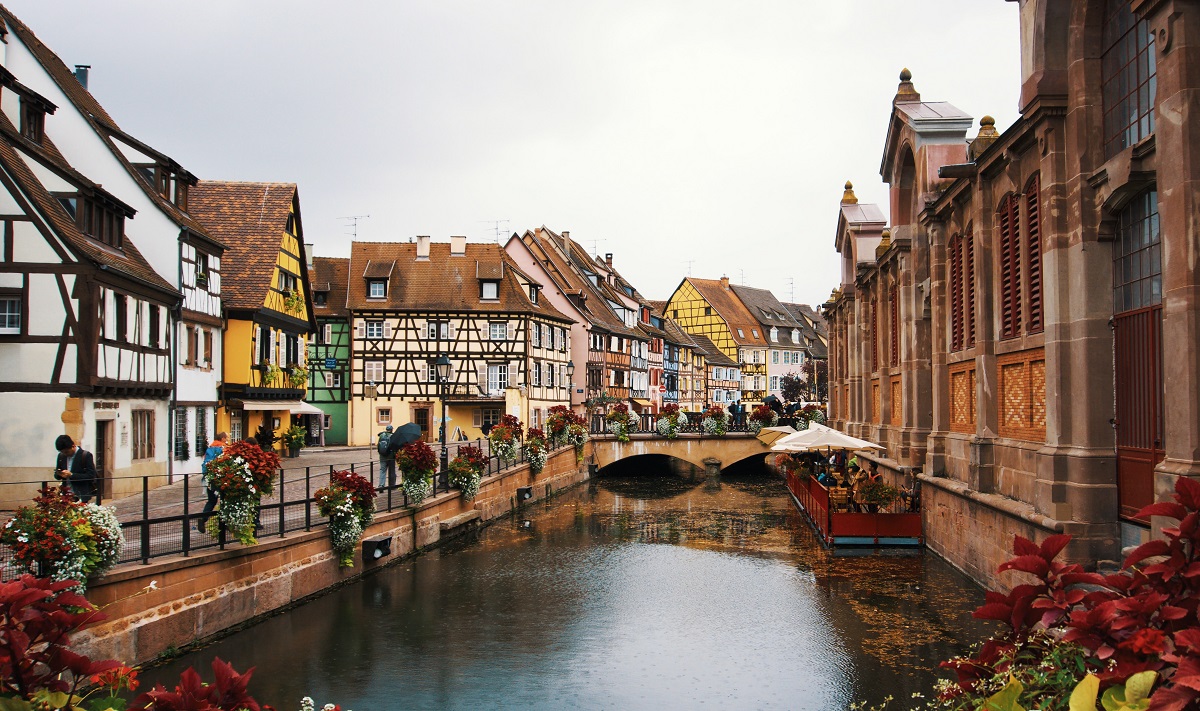
Colmar is a cozy city with a nice atmosphere, which is known for the well-preserved old town. Colmar is an old town known from the 8th century, and it became a free kingdom city in 1226. It developed over the centuries in the borderland between France and Germany, and Colmar has belonged to both countries.
There is much to see in Colmar. The old town survived both the French Revolution, the Franco-Prussian War of 1870-1871 and the two world wars of the 20th century, which is why the center of Colmar stands with beautifully preserved houses from past centuries. Among other things, you can enjoy the canal environment, which is also known as Little Venice/la Petite Venise.
There are many old buildings in Colmar, such as the Renaissance house Maison Pfister from 1537 and Koïfhus, which was built in Gothic and Renaissance in 1480. From slightly more recent times, you can see the theater Théâtre municipal de Colmar, which was built 1847-1849.
You can also visit several churches and museums such as the Unterlinden Museum/Musée Unterlinden, which is housed in a Dominican monastery from the 13th century. The museum has fine collections, not least known for Matthias Grünewald’s Isenheim altar, which was produced in the years 1512-1516.
The largest church in Colmar is Saint Martin Church/Église Saint-Martin, built 1234-1365 with later embellishments. The church stretches from Gothic to Baroque. You can also see the contemporary Église des Dominicains from 1289-1364 with, among other things, a famous work by Martin Schongauer.

Saarbrücken is the capital of the state of Saarland, and the city’s name means the bridges over the river Saar. Saarbrücken dates back more than a thousand years, and for over 400 years the counts of Nassau-Saarbrücken ruled the city until 1793, when French revolutionary troops captured the city. In 1815, Saarbrücken became part of a Prussian province, and Saarland finally became part of Germany on January 1, 1957.
There are several things to see in Saarbrücken, where you can make some nice walks in the city center. Here is the Alte Brücke, which is the oldest of the many bridges over the Saar. The Alte Brücke was built 1546-1549 and it connects the old St. Johann in the east with the baroque castle Schloss Saarbrücken, the city’s old town hall and the Historisches Museum Saar on the west bank.
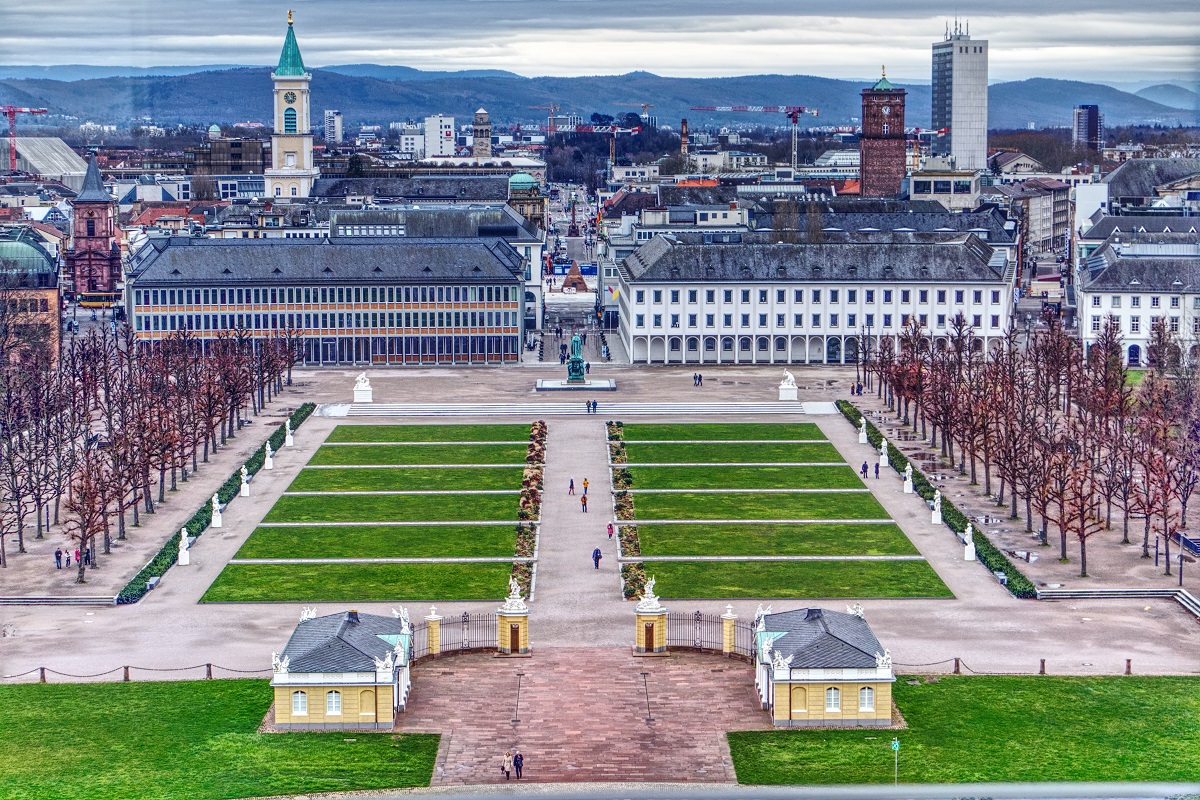
Karlsruhe is one of the largest cities in the state of Baden-Württemberg, and it is the historical capital of the region of Baden. The city is located east of the Rhine, and it was laid out with a special town plan, which can still be seen in the street network. Karlsruhe was founded in 1715 and laid out with the city’s castle as its center, and from here 32 radial streets emanate like spokes on a wheel, and the city’s commercial center is located at the bottom of the wheel.
Karlsruhe’s most famous building is the beautiful Schloss Karlsruhe, which was built at the beginning of the 18th century by Margrave Karl III Wilhelm of Baden-Durlach. The castle was the residence of Karlsruhe’s margraves and grand dukes until 1918, and since then the large facility has been used as, among other things, the museum Badisches Landesmuseum, where you can enjoy art, culture and history from Baden and large parts of the world.

Freiburg is a city in the southwestern German state of Baden-Württemberg, and it is known as the warmest and sunniest of the larger cities in Germany. Freiburg is an old city that has been known for centuries as a university city and the seat of an archbishop. Freiburg continuously developed under changing rulers, while most of the city center was destroyed by bombing during World War II and then rebuilt.
Today, Freiburg is a well-visited tourist city that has a cozy city center with several attractions. You can start at Münsterplatz square, where you can see Freiburg’s large Gothic cathedral from the 13th-16th centuries and the old trading house from around 1520, the Historisches Kaufhaus. Close to this you can walk another of Freiburg’s cozy squares, the Rathausplatz, where the city’s old town hall faces the large church, Kirche St. Martin.
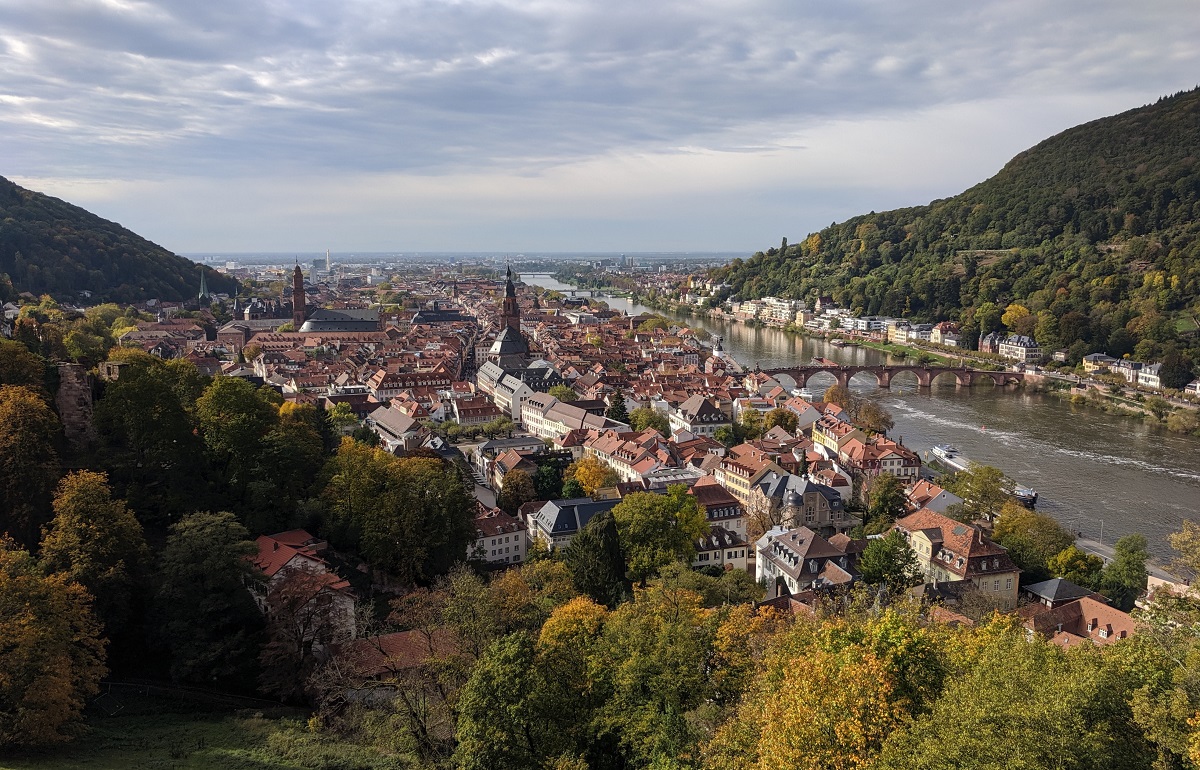
Heidelberg is a city on the river Neckar in the state of Baden-Württemberg. Among other things, the city is known as the home of Ruprecht-Karls-Universität Heidelberg, founded in 1386, which is Germany’s oldest university. The university’s presence affects Heidelberg in several ways.
Partly, many young students live in the city, and partly Heidelberg is the seat of a lot of research and development with, for example, several Max Planck institutes. Today, Heidelberg is also a favorite tourist destination with several attractions, a beautiful location, an old town with a lot of architecture from the Baroque era and the city’s impressive castle ruins.
Place André Maurois
strasbourg.aushopping.com
Place Kléber
laubette.com
24 Place des Halles
placedeshalles.com
3 Place Dauphine
rivetoile.com
Grand Rue, Rue des Grandes Arcades, Rue des Hallebardes, Rue des Orfèvres, Rue de la Mésange
Parc Animalier Friedel
Rue Girlenhirsch, Illkirch-Graffenstaden
Batorama
Place du Marché aux Poissons
batorama.com
Zoo de l’Orangerie
Boulevard de l’Orangerie
zoodelorangerie.fr
Pixel Museum
14 Rue de Lattre de Tassigny, Schiltigheim
pixel-museum.fr
Musée de Minéralogie
1 Rue Blessig
musee-mineralogie.unistra.fr
Musée Zoologique
Boulevard de la Victoire
musees.strasbourg.eu
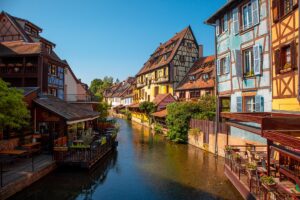 Strasbourg, France[/caption]
Strasbourg, France[/caption]
Overview of Strasbourg
Strasbourg is France’s easternmost city. It is located on the Rhine and thus along the border with Germany, and throughout history the city has been under both German and French rule, which can be seen in both historical events and in many neighborhoods of the interesting city.
The island of Grande Île is the center of Strasbourg, and here are many sights and opportunities for lovely walks that can start at Place Kléber. On the island you can see the city’s cathedral and four other old churches as well as the atmospheric neighborhood, Petite France, with canals and half-timbered houses.
Strasbourg is one of the centers of European politics. There are a number of institutions in the city, the most famous of which are the European Parliament and the Council of Europe. You can see the buildings in the Quartier Européen area. Another exciting neighborhood is beautiful Neustadt, which was laid out in the city’s German time.
About the Whitehorse travel guide
Contents: Tours in the city + tours in the surrounding area
Published: Released soon
Author: Stig Albeck
Publisher: Vamados.com
Language: English
About the travel guide
The Whitehorse travel guide gives you an overview of the sights and activities of the Canadian city. Read about top sights and other sights, and get a tour guide with tour suggestions and detailed descriptions of all the city’s most important churches, monuments, mansions, museums, etc.
Whitehorse is waiting for you, and at vamados.com you can also find cheap flights and great deals on hotels for your trip. You just select your travel dates and then you get flight and accommodation suggestions in and around the city.
Read more about Whitehorse and Canada
Canada Travel Guide: https://vamados.com/canada
City tourism: https://visitwhite-horse.ca
Main Page: https://www.vamados.com/
Buy the travel guide
Click the “Add to Cart” button to purchase the travel guide. After that you will come to the payment, where you enter the purchase and payment information. Upon payment of the travel guide, you will immediately receive a receipt with a link to download your purchase. You can download the travel guide immediately or use the download link in the email later.
Use the travel guide
When you buy the travel guide to Whitehorse you get the book online so you can have it on your phone, tablet or computer – and of course you can choose to print it. Use the maps and tour suggestions and you will have a good and content-rich journey.


Place Kléber is Strasbourg’s largest square and the center of the city. The square is named after the French general Jean-Baptiste Kléber, who was born in Strasbourg in 1753. On the square you can also see a statue of Kléber, who is actually buried under the monument. The statue was erected in 1838 and was designed by Philippe Grass.
The square was previously called Barfüsserplatz after a Franciscan monastery that was located here, and Waffenplatz before it got its current name in 1840. The most famous and distinctive building around Place Kléber is the Aubette, built 1765-1772 by King Louis XV’s architect Jacques François Blonde. Aubette is located along the north side of the square.
Aubette was erected as the seat of a garrison, which the previous building on the site had also been. A fire in 1870 destroyed Aubette, except for Blondel’s facade, and it was until the 1920s that Theo van Doesburg, Sophie Taeuber-Arp and Jean Arp recreated the interior in the modern style of the day. Van Doesburg was a pioneer within the De Stijl movement, and he created, among other things, the dance hall in Aubette.
Quartier Européen or the European Quarter is an area of Strasbourg that is a city with several European institutions. The Council of Europe has its seat in the Palais de l’Europe building, while the European Parliament meets in the Batiment Louise Weiss building.
Inaugurated in 1999, the Parliament building was given an exterior of glass and metal and constructed in an elliptical shape. The building is located along the banks of the river Ill, and its distinctive architecture is visible from several perspectives in the city. On a visit you can learn more about the role and function of the European Parliament.

Barrage Vauban is a combined bridge, embankment and fortification that was built in the years 1686-1690 across the River Ill immediately west of central Strasbourg. The facility was built by the engineer Jacques Tarade according to the plans of the military engineer Vauban.
There is an inner corridor in the dam that could be manned and used to flood the land south of the city if enemies came. This feature was used in 1870 during the Franco-Prussian War. The dam is 120 meters wide, and there is a nice view from here to, among other things, Petit France.
The Musée d’Art Moderne et Contemporain is a museum of modern and contemporary art, where you can see a large collection of art from 1870 to the present day. Here are paintings, sculptures, graphics and much more by, among others, Max Ernst and Vasilij Kandinsky.
The museum is one of the largest of its kind in France. It is housed in an architecturally interesting building which was built on the river Ill from 1995-1998. It was the Parisian architect Adrien Fainsilber who designed the building.

Palais Rohan is a beautiful mansion that was built as a residence for bishops and cardinals of the House of Rohan, an important noble family with roots in Brittany. The mansion was built next to Strasbourg Cathedral from the 1730s and was completed in 1742.
The Palais Rohan was designed by Robert de Cotte and is considered a masterpiece of French Baroque architecture. After completion, the mansion has hosted several French monarchs such as Louis XV, Marie Antoinette, Napoleon and Joséphine and Charles X.
Over the years, the Palais Rohan has been owned by the nobility, the state, the monarch and the city of Strasbourg. Since the end of the 19th century, it has been the seat of several museums; Archaeological Museum/Musée archéologique, the Museum of Decorative Arts/Musée des arts decoratifs and the Museum of Fine Arts/Musée des beaux-arts.
On a visit, you can experience the museum’s collections and of course also the interior of the mansion with many impressive rooms and halls. Among other things, you can see the synod hall, the monarchs’ chambers, beautiful ceramics and fine vases, tapestries and much more.
Hôtel de Hanau is a mansion in Strasbourg, also known as the Hôtel de Ville, which means that it is designed as the city’s town hall. The grand mansion stands on land originally owned by the family who were regents in a region of Hanau-Lichtenberg in the Teutonic Roman Empire.
The current mansion was built by Johann Reinhard III, who was the last Count of Hanau-Lichtenberg. The architect Joseph Massol was responsible for the construction, which took place 1731-1736. The mansion came into state ownership in 1790, and it has been Strasbourg’s town hall since 1805, when Napoleon gave the mansion to the city.

The Théâtre National is Strasbourg’s fine national theater, located in the Neustadt district, which was newly built during the German Gründerzeit period. The theater building was built in the Neo-Renaissance period in 1888-1889, and at that time it was the seat of the German parliament in the Reichsland Elsaß-Lothringen.
When the area became French in 1919, the French government offered the building to the city government of Strasbourg. The old parliament was then converted into a music conservatory. After an American bombardment in 1944, the parliament’s old meeting hall was destroyed, and between 1950 and 1957 a theater stage was built on the site instead.
The Bibliothèque Nationale et Universitaire is a library that was founded in 1872 as the German regional library for the Reichsland Elsaß-Lothringen. According to German tradition, all regions in Germany had to have a library, including Elsaß-Lothringen.
The institution was also an academic library and significant collections were established over the years. When the region became French in 1919, the French government considered whether the library should be closed or continued. The result was that they kept the library, which today has one of the most extensive collections in France.

Parc de l’Orangerie is a park that is one of Strasbourg’s lovely green areas. The 26-hectare park was laid out in the 18th century and was planted, among other things, with orange trees. Today, the park offers fine facilities and many paths for strolls.
Parc de l’Orangerie was significantly expanded from the original park in the German era after 1871, and this happened not least in connection with an industrial and craft exhibition in 1895. For this, the park’s artificial lake and waterfall were created.
Similar to Strasbourg Travel Guide
